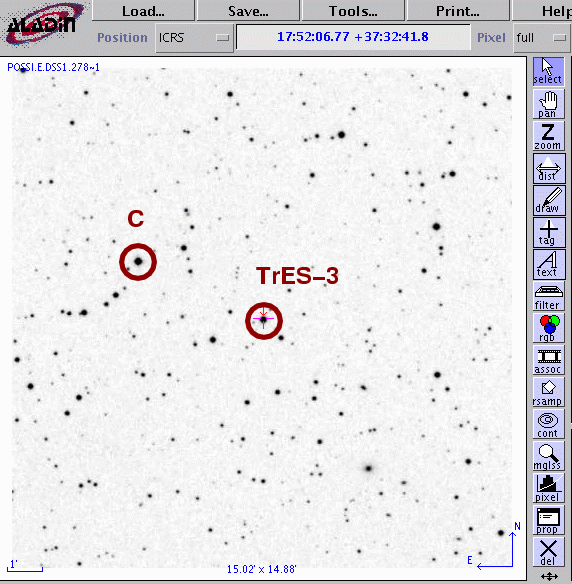
On the night of UT Nov 06, 2007, the SDSS Photometric Telescope ("PT" for short) took a series of exposures of TrES-3. We detected an entire transit. As in previous work with the PT, the observed transit of TrES-3 appears to be briefer than predicted by the transitsearch.org ephemeris. There is a hint of a "feature" in the light curve which may have some bearing on this difference.
Notes from the night
This is a chart of the field. TrES-3 orbits the is the bright star indicated by the crosshairs. The star labelled "C" will appear in later graphs.

The host star of TrES-3 has a magnitude V=12.40 according to TrES-3: A Nearby, Massive, Transiting Hot Jupiter in a 31-Hour Orbit .
Following the procedures outlined by Kent Honeycutt's article on inhomogeneous ensemble photometry, I used all stars available in each image to define a reference frame, and measured each star against this frame. You can find the software package used to do the ensemble photometry online; it's free!
The night was cloudy. The graph below shows the amount by which instrumental magnitudes from each image needed to be shifted to match the ensemble reference. On a clear night, this graph would show a straight horizontal line.
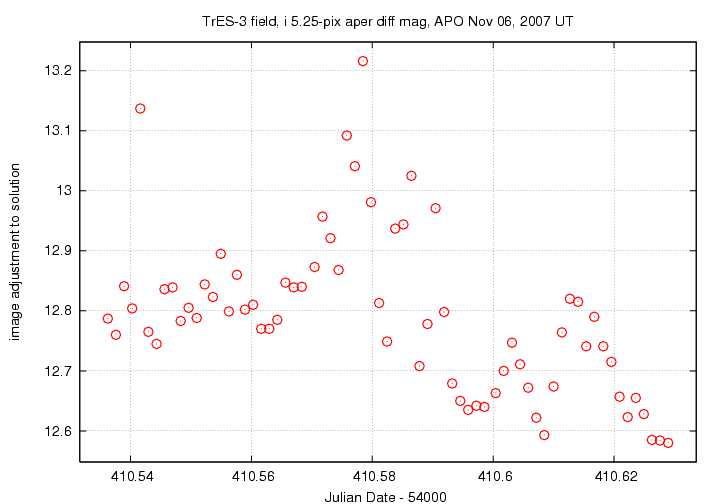
Below is a graph of the scatter in differential magnitude versus magnitude in the ensemble solution.
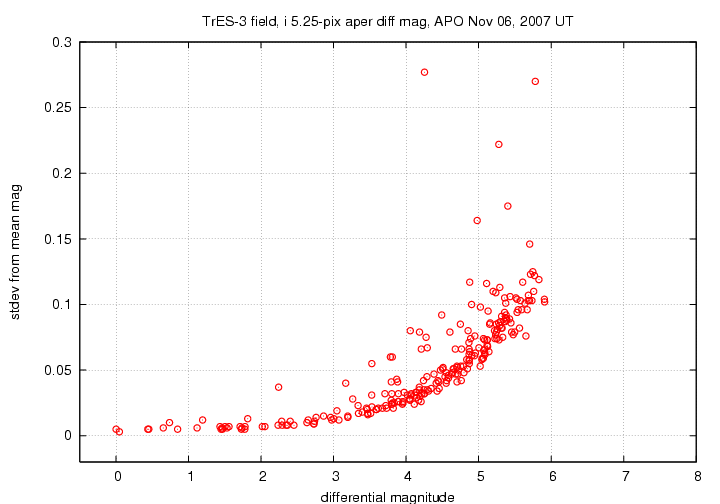
TrES-3 is the star at differential mag 0.73. it shows a very small excess of scatter than neighboring stars of the same brightness. The "noise floor" in these measurements is about 0.005 mag -- not great, due to the clouds.
Below are the light curves for the target (green symbols) and four comparison stars in the field.
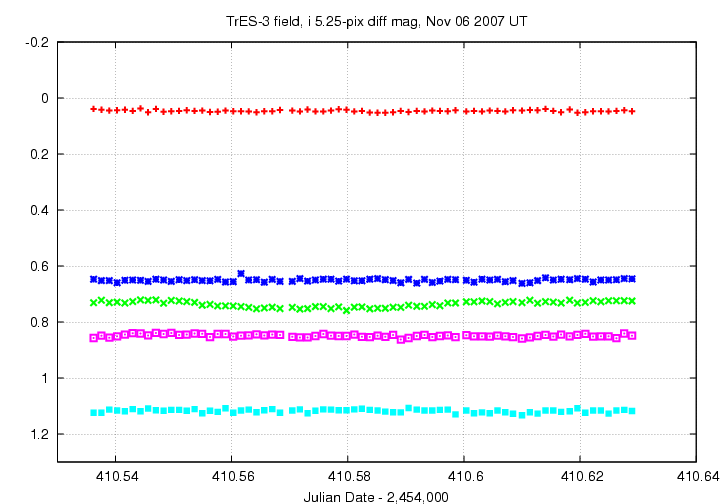
In this closeup, I have shifted the data for two comparison stars to move them closer in magnitude to the target.
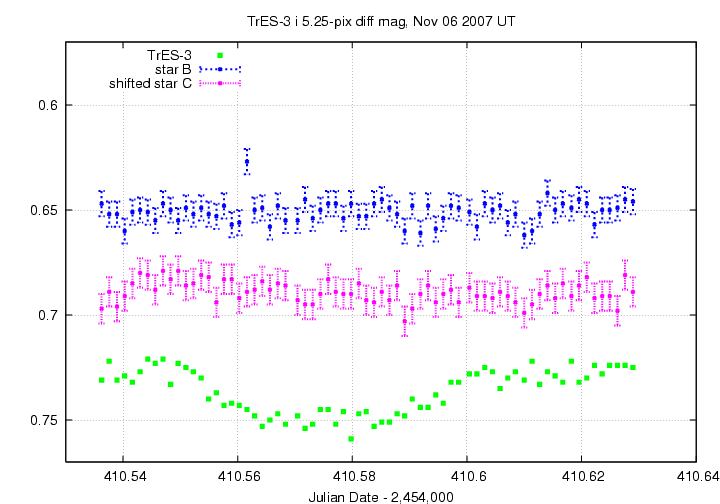
In measurements on MJD 54393, we saw a little dip in the brightness before the transit. Here it is again! We don't see the beginning of this dip -- could it be the explanation for the longer duration predicted by the ephemeris? We need more data on this star, with a longer set of pre-transit observations to set the baseline properly.
An ephemeris grabbed from transitsearch.org predicts for this night
----------------------------------------------------------------------------------------
Begin Transit Window PREDICTED CENTRAL TRANSIT End Transit Window
All Times UT
HJD Year M D H M
2454410.54 2007 11 6 0 52 2454410.57 2007 11 6 1 47 2454410.61 2007 11 6 2 43
----------------------------------------------------------------------------------------
The ephemeris ingress of UT 2007 Nov 06 00:52:00 corresponds to JD 2,454,410.536, which is about 20 minutes EARLIER than the observed ingress. The ephemeris egress of UT 2007 Nov 06 02:43:00 corresponds to JD 2,454,410.613, which is about 12 minutes LATER than the observed ingress.
This pattern confirms the indications from earlier nights,
You can grab the measurements for your own analysis. Below is a table with three flavors of time, plus the differential magnitude of the target and an estimate of the uncertainty in each measurement. I show the first few lines of the file to give you an idea of its format.
# Measurements of TrES-3 made with APO PT, Nov 6, 2007 UT. # Each exposure 30 seconds long in SDSS i-band; # Tabulated times are midexposure (FITS header time - half exposure length) # and accurate only to +/- 1 second (??). # 'mag' is a differential magnitude based on ensemble photometry # using a circular aperture of radius 5.25 arcseconds. # # UT day JD-2,450,000 HJD-2,450,000 mag uncert Nov06.53624 4410.53624 4410.53423 0.731 0.006 Nov06.53758 4410.53758 4410.53557 0.722 0.006 Nov06.53894 4410.53894 4410.53693 0.731 0.006
Last modified 11/10/2007 by MWR.